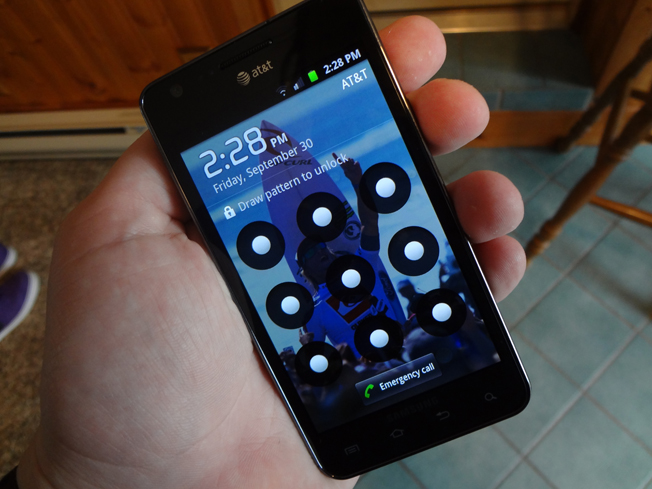BGR has uncovered a major security flaw on AT&T’s version of the Samsung Galaxy S II that renders Android’s security lock feature completely useless. Using a simple workaround, the security hole allows anyone to bypass the unlock pattern, which normally denies users access to an Android device unless a preset pattern is drawn on a grid of nine dots spread across the device’s lock screen. The same flaw allows users to bypass PIN security as well. We have confirmed that the flaw exists on AT&T’s Galaxy S II and not on Sprint’s Galaxy S II, Epic Touch 4G, though it is currently unclear if other phone models are affected. Hit the break for details on the flaw.
Updated with statement from Samsung.
If you have a PIN or an unlock pattern set, all you have to do in order to bypass it is simply tap the lock button to wake the display and then let the screen time out and go black. Tap the lock button again and low and behold, the unlock screen is gone and the phone can be accessed with no PIN or pattern input whatsoever.
This security workaround exists as long as the phone has been successfully unlocked using the proper pattern or PIN at least one time, so the lock cannot be bypassed immediately after the device is powered on. Of course the first thing a user does after powering on a phone is unlock it, so lost and unattended devices are at risk unless they have been powered off since last being used. Of note, users with Microsoft Exchange security policies don’t seem to be affected.
A Samsung spokesperson responded to BGR’s inquiry, stating that the company is investigating the possible security threat but no further comment is available at this time. An AT&T spokesperson declined to comment.
Additional reporting by Todd Haselton. Updated to reflect that the flaw exists for PIN security as well.
UPDATE: Samsung issued the following statement in regards to the bug:
Samsung and AT&T are aware of the user interface issue on the Galaxy S II with AT&T. Currently, when using a security screen lock on the device, the default setting is for a screen timeout. If a user presses the power button on the device after the timeout period it will always require a password. If a user presses the power button on the phone before the timeout period, the device requests a password – but the password is not actually necessary to unlock it.
Samsung and AT&T are investigating a permanent solution. In the meantime, owners of the Galaxy S II can remedy the situation by re-setting their time-out screen to the “immediately” setting. This is done by going to the Settings ->Location and Security->Screen unlock settings->Timeout->Immediately.







